Showing all 11 results
-
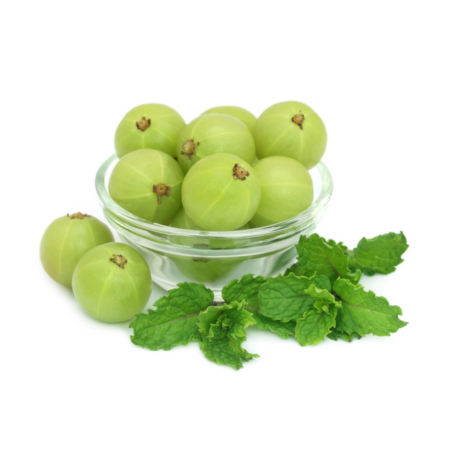
Aamla (Per 250g)
₹98.00Add to cartAmla
Amla, also known as Indian gooseberry (Phyllanthus emblica), is a small, round, green fruit native to India and other parts of Southeast Asia. Revered in Ayurvedic medicine for its wide-ranging health benefits, amla is known for its tart flavor, which can be an acquired taste. It has been used for centuries in traditional remedies, thanks to its potent antioxidant properties and nutritional richness. Often consumed fresh, dried, or in juice form, amla is a powerhouse of vitamin C and other nutrients.
-

Baby Spinach (Per 100gms)
₹115.00Add to cartBaby spinach (Spinacia oleracea) refers to the young, tender leaves of spinach plants harvested early in their growth cycle. Smaller and more delicate than mature spinach, baby spinach is prized for its mild flavor, smooth texture, and versatility in a wide range of dishes. It is a nutrient-dense green that is commonly used in salads, smoothies, sautés, and as a garnish. Baby spinach has small, delicate leaves that wilt to a slippery mass when cooked. The flavor of baby spinach is also much milder than that of mature bagged and bunched spinach.
-

Chinese Cabbage (One Unit) Approx 800g
₹220.00Add to cartChinese cabbage (Brassica rapa subsp. pekinensis), also known as Napa cabbage, is a leafy vegetable widely used in Asian and global cuisines. It is recognized for its mild, sweet flavor, crisp texture, and high nutritional value, making it a favorite in salads, stir-fries, soups, and fermented dishes like kimchi.
Key Features:
- Appearance: Chinese cabbage has an elongated head with tightly packed, pale green leaves that are broad, crinkly, and tender. The veins are prominent and add a slight crunch.
- Flavor: The flavor is mild and slightly sweet, without the sharpness typically associated with other cabbages.
- Nutritional Value: It is low in calories but high in essential vitamins and minerals, including vitamins C and K, folate, calcium, and potassium. It also contains antioxidants and dietary fiber, promoting digestion and overall health.
-
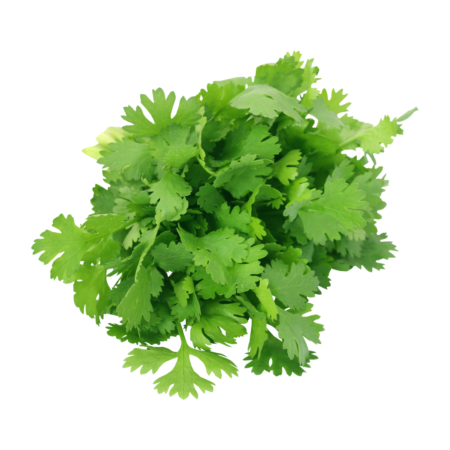
Coriander – (Per 100g)
₹45.00Add to cartCoriander, Coriandrum Sativum, is an erect annual herb in the family Apiaceae. The Leaves of the plant are variable in shape, & Slender & feathery higher on the flowering stems. It is a soft, hairless plant. The flowers are produced in small umbels & are white or Very pale pink in colour with the petals pointing away from the centre of the umbel longer than those pointing towards it. All parts of the coriander plant are edible, but the fresh leaves and the dried seeds are most commonly used. Leaves and seeds are used fresh or dried as a herb in cooking.
-
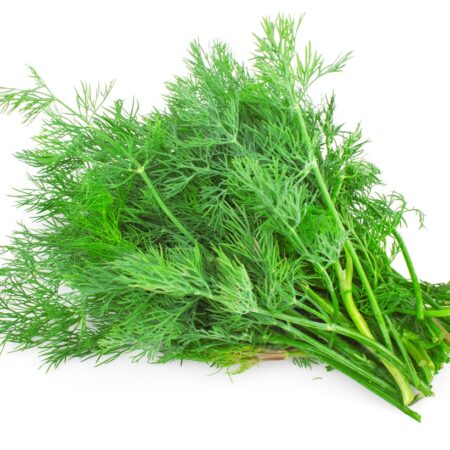
Dill Leaves – (Per 100g)
₹60.00Add to cartDill has copious tiny, yellow flowers and thin, wispy, feathery, yellow-green leaves and grows two to three feet tall. The seeds and leaves of this very aromatic herb are used in cooking. Dill’s interesting flavor has been described as licorice-flavored and as being a combination of anise, parsley, and celery. Dill leaves imbued with powerful digestive, anti-microbial, anti-flatulent, and cardiotonic properties, have also been used since decades as a traditional ayurvedic remedy for treating a host of health and skin conditions.
-
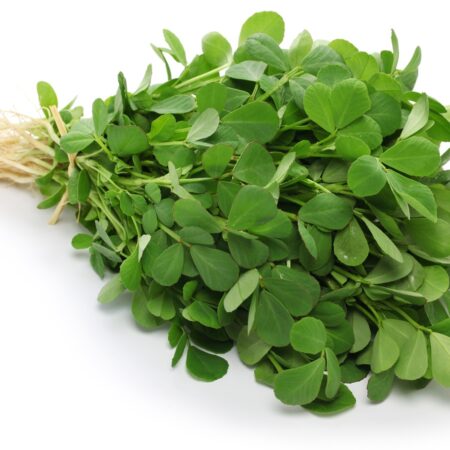
Fenugreek (Methi) – Per 200g
₹90.00Add to cartFenugreek (Trigonella foenum-graecum)
Fenugreek is a versatile herb and spice known for its distinct aroma, slightly bitter taste, and numerous health benefits. It is widely used in culinary, medicinal, and cosmetic applications. Native to the Mediterranean region, fenugreek is now cultivated globally, especially in India, North Africa, and the Middle East.
Key Features:
-
Culinary Use:
-
Leaves: Fresh or dried fenugreek leaves (methi) are used in curries, stews, and flatbreads. They impart a robust, earthy flavor.
-
Seeds: Small, golden-brown seeds are roasted and ground into spice blends like garam masala or soaked for sprouts in salads and dishes.
-
-
Nutritional Value:
Rich in proteins, dietary fiber, iron, magnesium, and vitamin B6. Fenugreek also contains bioactive compounds like saponins and flavonoids, contributing to its health benefits.
-
Health Benefits:
Fenugreek is believed to aid in digestion, improve blood sugar control, promote lactation in nursing mothers, and support heart health.
-
Flavor Profile:
Slightly nutty with a hint of bitterness when raw, but it develops a caramel-like sweetness when cooked.
Fenugreek is prized for its adaptability in recipes and its long-standing reputation in traditional medicine. Its earthy, aromatic presence enhances any dish it accompanies while contributing valuable nutrients.
-
-

Green Chawli (Amaranth) – Per 200g
₹50.00Add to cartGreen Chawli leaves, also known as Amaranthus or amaranth leaves, are a powerhouse of nutrients and offer several health benefits.
Nutritional Profile
Amaranthus leaves are rich in:
- Vitamins: A, C, K, and folate.
- Minerals: Iron, calcium, potassium, magnesium, and zinc.
- Dietary Fiber: Promotes digestive health.
- Protein: Contains essential amino acids, making it a good plant-based protein source.
- Antioxidants: Including betalains and carotenoids, which help combat free radicals.
-
Sale!
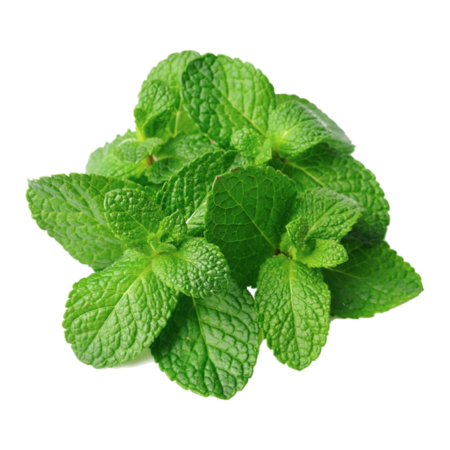
Mint (Hydroponics) -Per 50g
Original price was: ₹45.00.₹40.00Current price is: ₹40.00.Add to cartMint is a fragrant herb known for its refreshing aroma and vibrant green leaves. Commonly used in culinary dishes, teas, and cocktails, it adds a cool, crisp flavor. Mint is easy to grow and thrives in various conditions, making it a popular choice for gardens.Mint is a fragrant herb known for its refreshing aroma and vibrant green leaves.
-

Red Amaranth (Hydroponics) – Per 200g
₹50.00Add to cartRed Amaranth has fleshy oval shaped leaves that are sometimes pointed at the tips. The best way to consume them is in the form of salads. Other way is by sautéing the leaves with onions, garlic and a few spices.
Red Amaranth lowers cholesterol and risk of cardiovascular disease, reduces risk of osteoporosis and other calcium deficiencies, aids in weight loss or maintaining a standard weight, digests easily, improves eyesight and helps with hair loss and greying.
-
Sale!

Spinach Regular (Hydroponics) -Per 200g
Original price was: ₹130.00.₹95.00Current price is: ₹95.00.Add to cartSpinach is a leafy green vegetable known for its nutrient-rich profile, mild flavor, and versatility in the kitchen. It is widely consumed both raw and cooked and is a key ingredient in a variety of dishes, from salads and smoothies to soups, omelets, and pastas. Spinach is rich in vitamins, minerals, and antioxidants, making it a popular choice for health-conscious eaters.
Spinach belongs to the Amaranthaceae family, and there are several different varieties, including savoy, flat-leaf, and baby spinach. Savoy spinach has curly, crinkled leaves, while flat-leaf spinach has smooth, broad leaves. Baby spinach refers to younger, tender leaves that are harvested early in the plant’s growth cycle and are prized for their delicate texture.
-

White Radish (One Bunch)
₹50.00Add to cartRadish is a crunchy, peppery vegetable that adds freshness to many dishes. Enjoy it raw in salads, sandwiches, or wraps for a crisp texture and mild heat. You can also pickle radish for a tangy, flavorful snack or add it to salsas and chutneys. Radishes can be sautéed or roasted to mellow their flavor, making them a great addition to stir-fries or roasted vegetable mixes. For a unique twist, try blending them into soups or smoothies for added nutrients. Radish is a low-calorie vegetable packed with vitamins C and B6, fiber, and antioxidants. It aids digestion, supports detoxification, and promotes healthy skin. With its natural anti-inflammatory properties, radish is a great addition to a healthy diet.

